You’ve done the hard part – driving traffic to your WooCommerce store. But if your Average Order Value (AOV) is stuck, so is your growth.
With cart abandonment rates near 70%, every customer who reaches checkout is a win. Failing to maximize that moment? That’s profit slipping away.
So, you try to fix it. Add an upsell plugin. Then a post-purchase tool. A countdown timer. A pop-up for social proof.
At first, things look better.
Then your site slows down. Your dashboard becomes a mess. Analytics are fragmented. Funnels break. Testing gets messy. You’ve created a Frankenstein stack of plugins that barely work together.
The problem isn’t your effort – it’s your setup.
You don’t need more plugins. You need a smarter, all-in-one solution that handles upsells, urgency, and offers from a single, lightweight dashboard – with clean analytics to back it up.
In this guide, we’ll walk you through the top 6 WooCommerce upsell plugins built for real growth. No fluff – just what works, what doesn’t, and how to choose the one that fits your store.
By the end, you’ll know exactly how to boost your AOV without bloating your site or breaking your funnel.
Why Your Stores Are Leaking Revenue

Most store owners are obsessed with traffic, believing it’s the ultimate key to growth. But relentless traffic acquisition is like pouring water into a leaky bucket; it’s expensive, inefficient, and you lose more than you keep.
This is mainly because you are bringing in traffic, but you are not enticing them to take proper action and within a timeframe.
For a results-focused marketer, the real leverage isn’t just in getting more visitors; it’s in maximizing the value of the visitors you already have. This is where focusing on your Average Order Value (AOV) becomes a game-changer.

Beyond Traffic: The High ROI of Utilizing Existing Customers
Customer acquisition is brutally expensive.
In fact, acquiring a new customer can cost five times more than retaining an existing one.
When you increase your AOV, you’re not just making more money from a single sale; you’re fundamentally improving the ROI of your entire marketing spend. Every ad campaign, every social media post, and every email blast becomes much more profitable.
Think of it this way: would you rather spend $500 on ads to get ten new $50 sales, or would you rather find a way to get your existing customers to spend $65 instead of $50?
The latter approach grows your revenue without increasing your ad budget.
By presenting a targeted Upsell Order Bump at the perfect moment, you persuade happy customers to add a complementary product, boosting both the sale’s value and the customer’s satisfaction.
This is the core principle of sustainable, capital-efficient growth. It’s about working smarter, not just spending more.
Calculating Your AOV and Setting a Baseline
You can’t improve what you don’t measure. Before you can start boosting your AOV, you need a clear baseline. The calculation is simple:
Total Revenue / Number of Orders = Average Order Value (AOV)
For example, if your store generated $10,000 from 200 orders last month, your AOV is $50.
This number is your north star. It tells you the current value of each transaction. Once you have your baseline, you can set a clear goal. Could you increase it to $55 in the next quarter?
Even a 10% increase in AOV can translate into significant revenue growth over a year, dramatically impacting your bottom line without requiring a single new visitor.
See how this metric fits into a larger strategy in our post on eCommerce KPIs you should be tracking.
Pre-Purchase vs Post-Purchase: The Anatomy of a High-Converting Upsell Strategy
To effectively boost AOV, it’s not enough to simply have an upsell; you need to deploy the right type of offer at the right time. A customer’s mindset is completely different before they’ve committed to a purchase versus the moment after they’ve paid.
Understanding this distinction is the key to creating frictionless, high-converting offers instead of annoying, disruptive popups.
Let’s have a look into the types of upsell strategies you can implement in your WooCommerce Store.
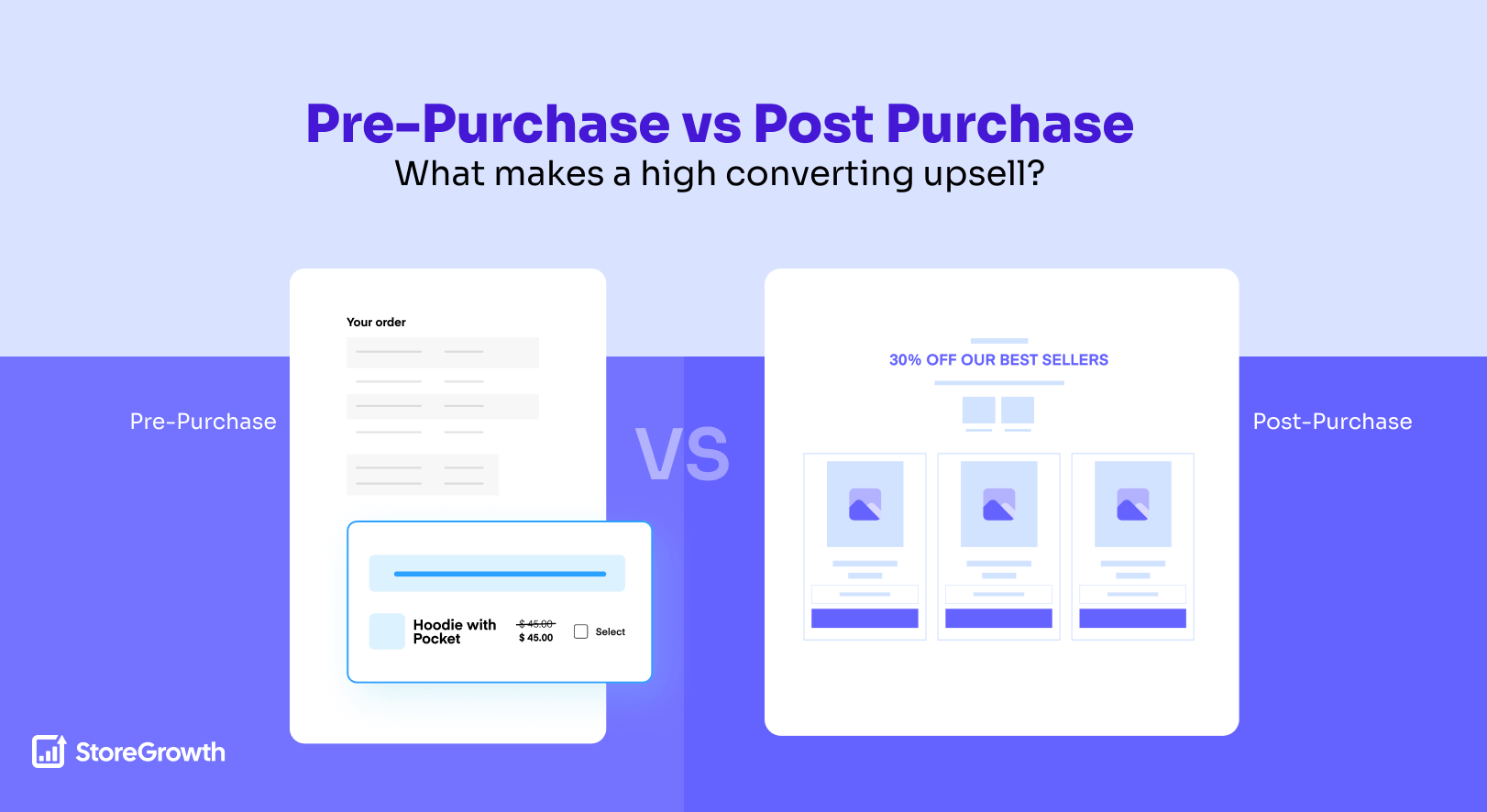
1. Order Bumps: The Impulse Buy at Checkout
An order bump is the ultimate impulse buy. It’s a small, highly relevant, and often discounted offer presented directly on the checkout page, typically as a simple checkbox, just before the customer clicks “Place Order.”
The beauty of an Upsell Order Bump is its seamlessness. It doesn’t interrupt the user flow with a popup or force them to a new page. It leverages the customer’s high purchase intent at its absolute peak.
- Best for: Low-cost, complementary items that don’t require much thought. Think warranties, product protection, or small accessories.
- Why it Works: It feels like a helpful suggestion rather than an aggressive upsell, making it an easy “yes” for the customer.
2. Cart Upsells & Cross-Sells: The ‘Frequently Bought Together’ Tactic
Popularized by Amazon, this strategy involves showing related or complementary products on the product page or within the cart itself.
- Upsells encourage the customer to buy a more premium, feature-rich version of the product they are considering.
- Cross-sells suggest different, but related, products that enhance the original item.
StoreGrowth’s Fly Cart feature is perfect for this, allowing you to present targeted cross-sells directly in the slide-out cart whenever a customer adds an item, capturing their interest without forcing them to navigate away from the page.
3. Post-Purchase One-Click Upsells: The Frictionless Thank You Page Offer
This is where serious revenue growth happens. A post-purchase upsell is an offer presented on the ‘thank you’ page after the customer has completed their initial purchase.
Because their payment information is already saved (tokenized) by gateways like Stripe or PayPal, they can accept the offer with a single click, no need to re-enter any details.
- Best for: Higher-value upsells or cross-sells that might have caused friction or hesitation if offered before the main purchase was complete.
- Why it Works: The primary sale is already secured, so there’s zero risk of cart abandonment. The customer is in a peak state of trust and excitement about their purchase, making them highly receptive to a compelling, one-time-only deal.
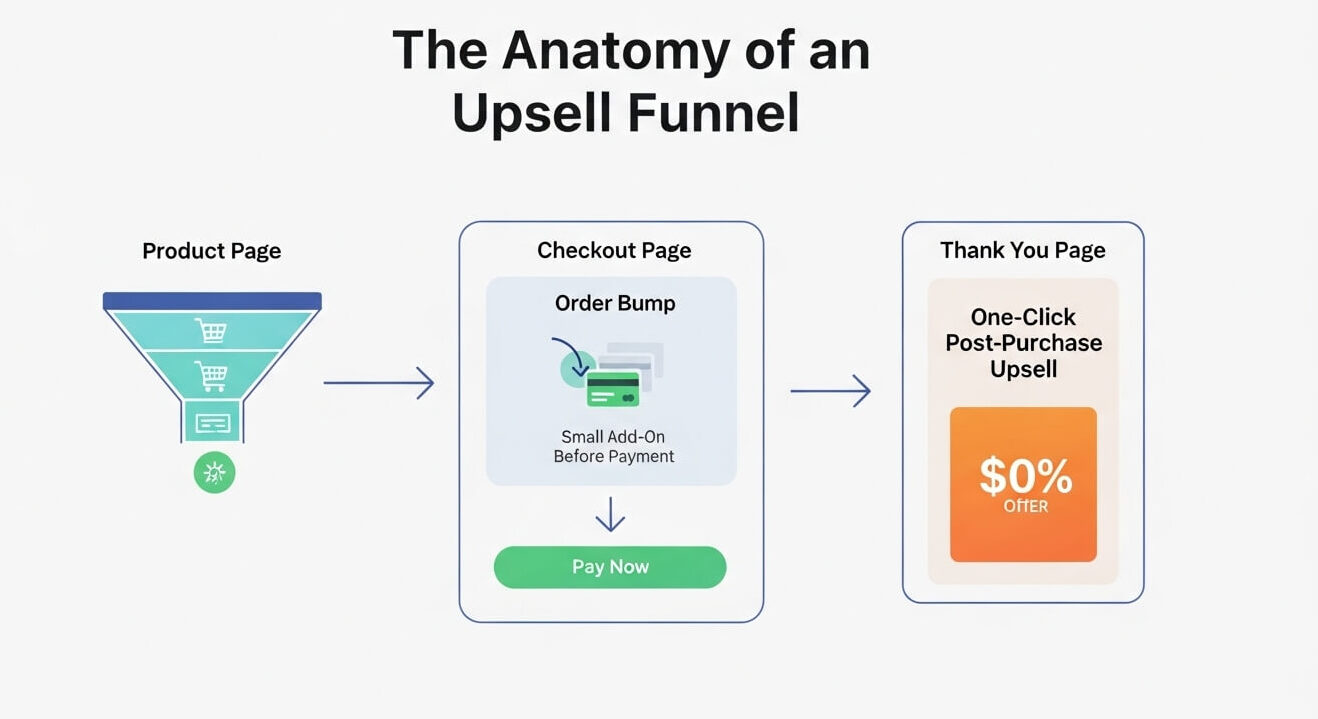
The Marketer’s Dilemma: All-in-One Suite vs. Single-Feature Plugins
As a store owner or marketer, you inevitably arrive at a critical fork in the road. Do you assemble a ‘best-in-class’ stack of individual, single-feature Woocommerce Upsell Plugin?
Or do you opt for a unified, all-in-one suite that handles everything from a single dashboard?
For years, we have been using niche plugins to solve niche problems. However, with the WordPress files getting cluttered it’s very important for developers to install the least amount of plugins to achieve their desired functionalities.
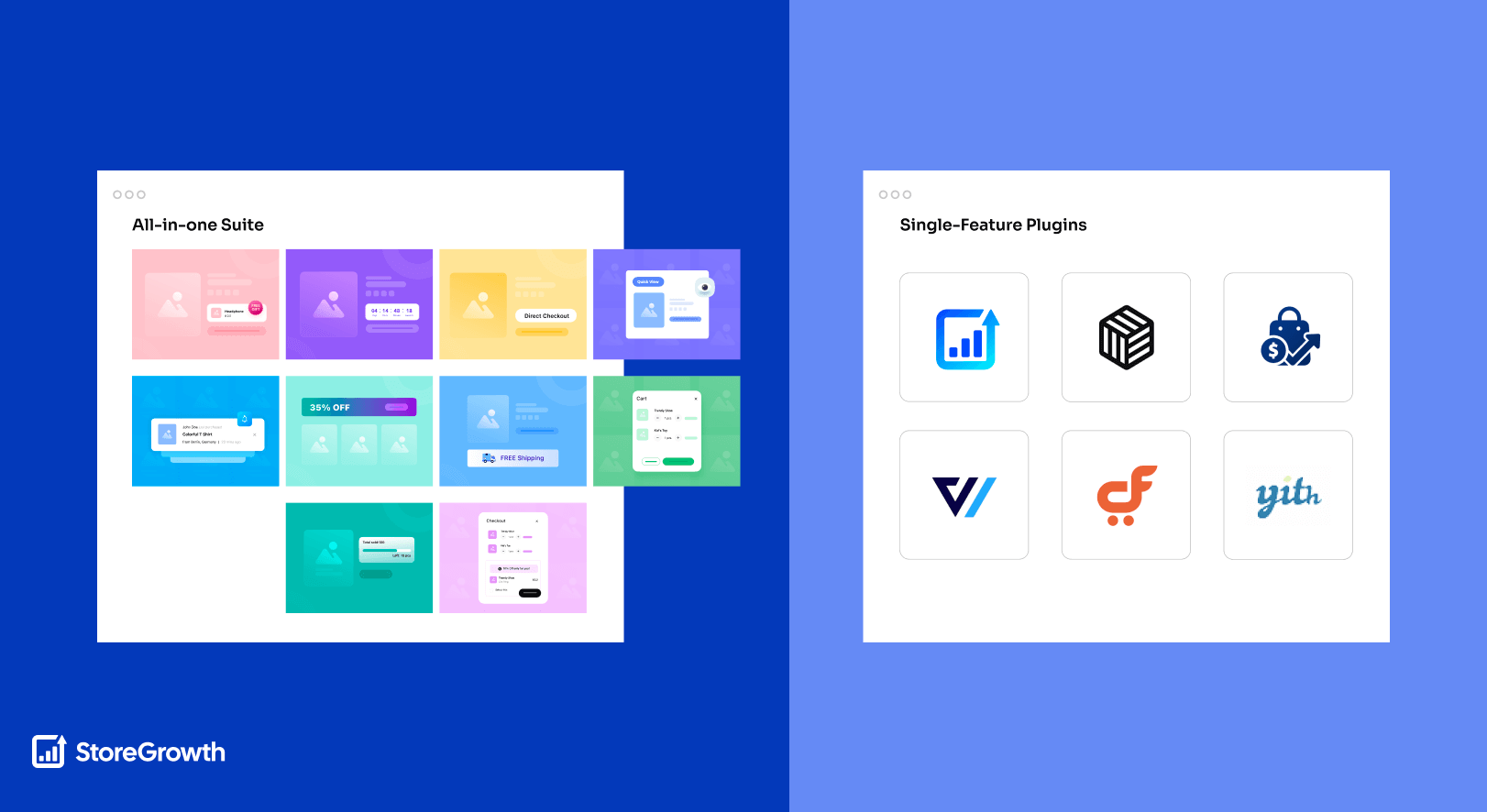
The Hidden Cost of ‘Death by a Thousand Plugins‘
On the surface, picking and choosing individual plugins seems logical. But this approach quickly leads to plugin bloat, creating significant problems:
- Performance Degradation: Every active plugin adds new scripts, CSS files, and database queries to your site. The more you add, the slower your site becomes. A slow checkout page directly undermines the very conversion goals you’re trying to achieve.
- Maintenance & Compatibility Headaches: Managing updates and subscriptions for 5, 6, or even 10+ different plugins is not just time-consuming – it’s risky. A single poorly-coded update can create conflicts or even crash your site.
- Fragmented Data & Workflows: When your order bump data is in one plugin and your post-purchase funnel analytics are in another, you get a fractured view of your customer’s journey. It becomes nearly impossible to run cohesive A/B tests or understand how different offers influence each other.
The Power of a Unified Dashboard for A/B Testing and Analytics
This is where the all-in-one suite model shines. By integrating features like upsells, countdown timers, and sales notifications into a single, optimized toolkit, a solution like StoreGrowth eliminates these problems entirely. The code is designed to work together, minimizing performance impact.
Most importantly, all your data flows into one place.
From a single Analytics Dashboard, you can see how your order bumps are performing and which funnels are generating the highest AOV. This unified view empowers you to make smarter, faster decisions, turning your CRO efforts from a guessing game into a data-driven science.
Tired of juggling multiple plugins? See how StoreGrowth’s unified toolkit simplifies your CRO stack and boosts revenue from a single dashboard.
The Top 6 WooCommerce Upsell Plugins of 2025
Now that you understand the strategy, it’s time to choose your tool. We’ve cut through the clutter to analyze the top 6 dedicated plugin solutions that excel in boosting AOV based on core functionality, performance, and user experience.
1. StoreGrowth (The All-in-One Performance Champion)
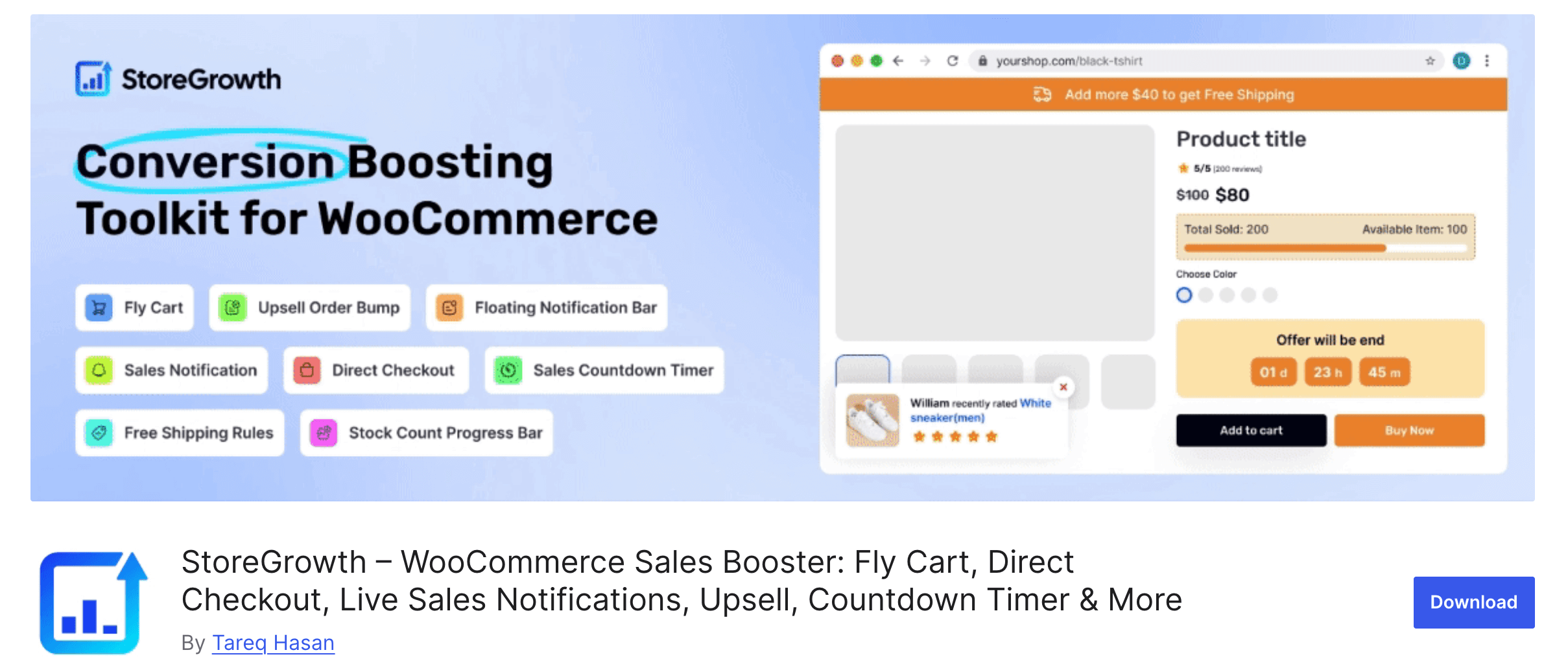
Best for: Marketers and store owners who want a powerful, unified CRO toolkit that boosts AOV without sacrificing site speed.
StoreGrowth isn’t just an upsell plugin; it’s a complete sales acceleration suite built with a performance-first mindset. It’s designed to solve the “Frankenstein” problem by replacing 5+ separate plugins with one lightweight, seamlessly integrated solution.
- Core Features: Upsell Order Bump, Fly Cart with built-in cross-sells, and natively integrated tools like Sales Countdown Timers, BOGO Deals, and Live Sales Notifications.
- Pros: Blazing fast and lightweight, true all-in-one dashboard with unified analytics, and incredible value for the price.
- Cons: Funnel-building is not as hyper-specialized as dedicated builders like FunnelKit, which offer more advanced A/B testing.
- Pricing: A robust free version is available. Premium plans start at $99/year.
See all the features in action on the StoreGrowth Modules page.

2. FunnelKit (WooFunnels) (The Advanced Funnel Builder)
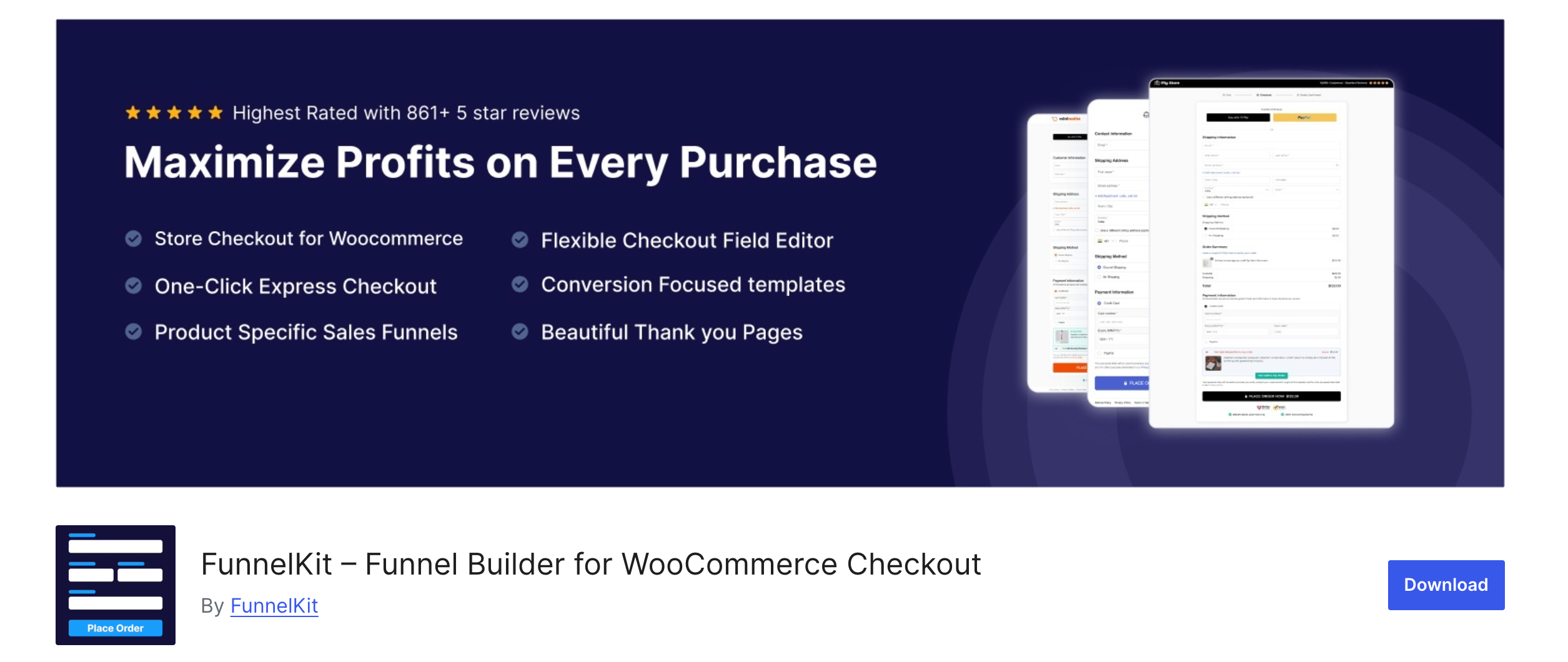
Best for: Data-driven marketers and agencies who need to build complex, multi-step sales funnels with advanced conditional logic and A/B testing.
FunnelKit is a powerhouse for providing deep, granular control over every step of the customer’s journey, from custom landing pages to highly specific post-purchase sequences.
- Core Features: One-click upsells & downsells, dynamic offer paths based on triggers, and in-depth analytics with A/B testing.
- Pros: Unmatched funnel-building power, seamless one-click post-purchase experience, and excellent for digital products.
- Cons: Can be overkill and complex for simple needs, and its feature-rich nature can add more weight to a site than a lightweight solution.
- Pricing: Limited free version available. Premium plans start around $129/year.
3. UpsellWP (The Dedicated Upsell Specialist)
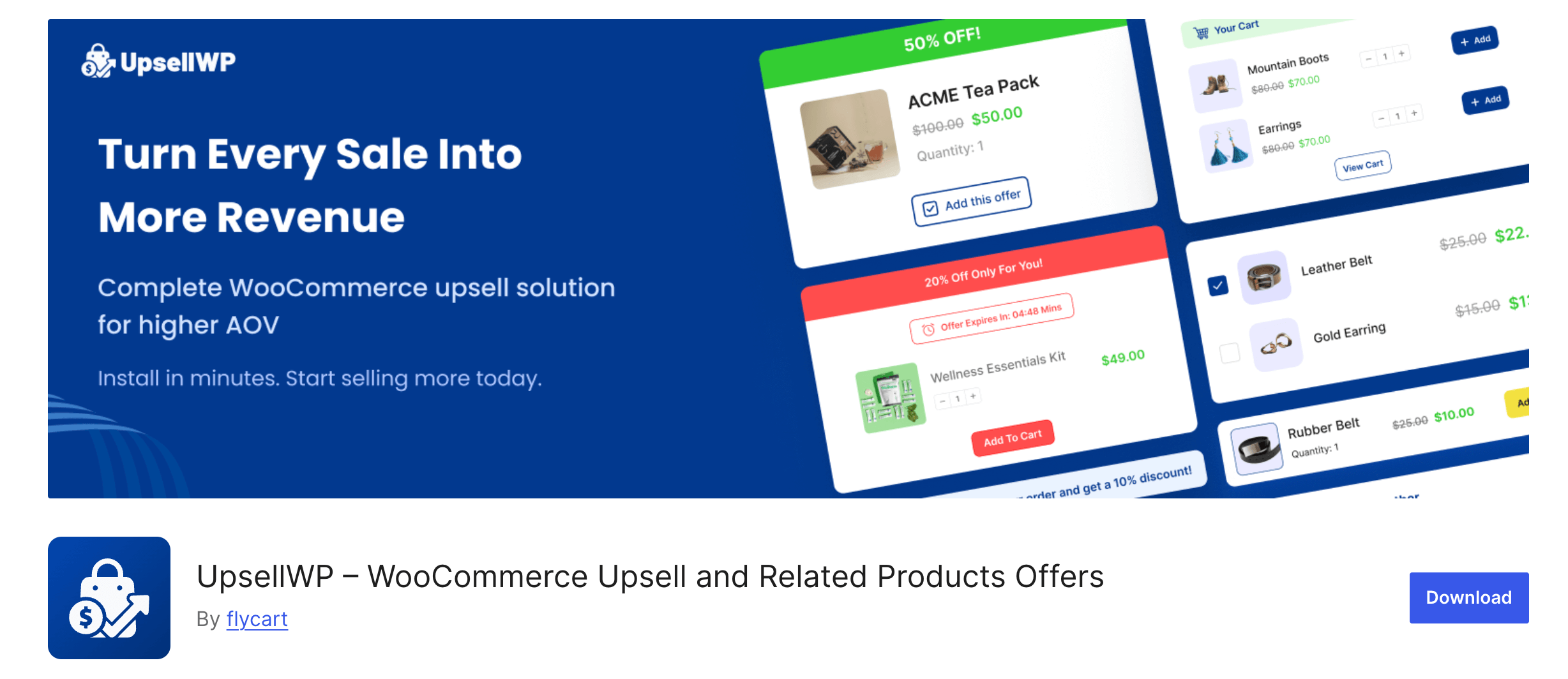
Best for: Store owners who want a straightforward, feature-rich plugin dedicated specifically to creating a wide variety of upsell and cross-sell offers.
UpsellWP focuses on one thing and does it exceptionally well: creating targeted product recommendations. It’s an excellent choice for a store owner who wants robust upsell features without the complexity of a full funnel-building application.
- Core Features: Comprehensive offer types (checkout bumps, post-purchase, bundles), highly customizable campaigns, and detailed analytics.
- Pros: Feature-rich for its niche, user-friendly interface, and a good balance of power and simplicity.
- Cons: Not an all-in-one solution (still need plugins for timers, etc.), and limited native A/B testing capabilities.
- Pricing: Free version with basic features. Premium versions start at $69/year.
4. Iconic Sales Booster (The User-Friendly Option)
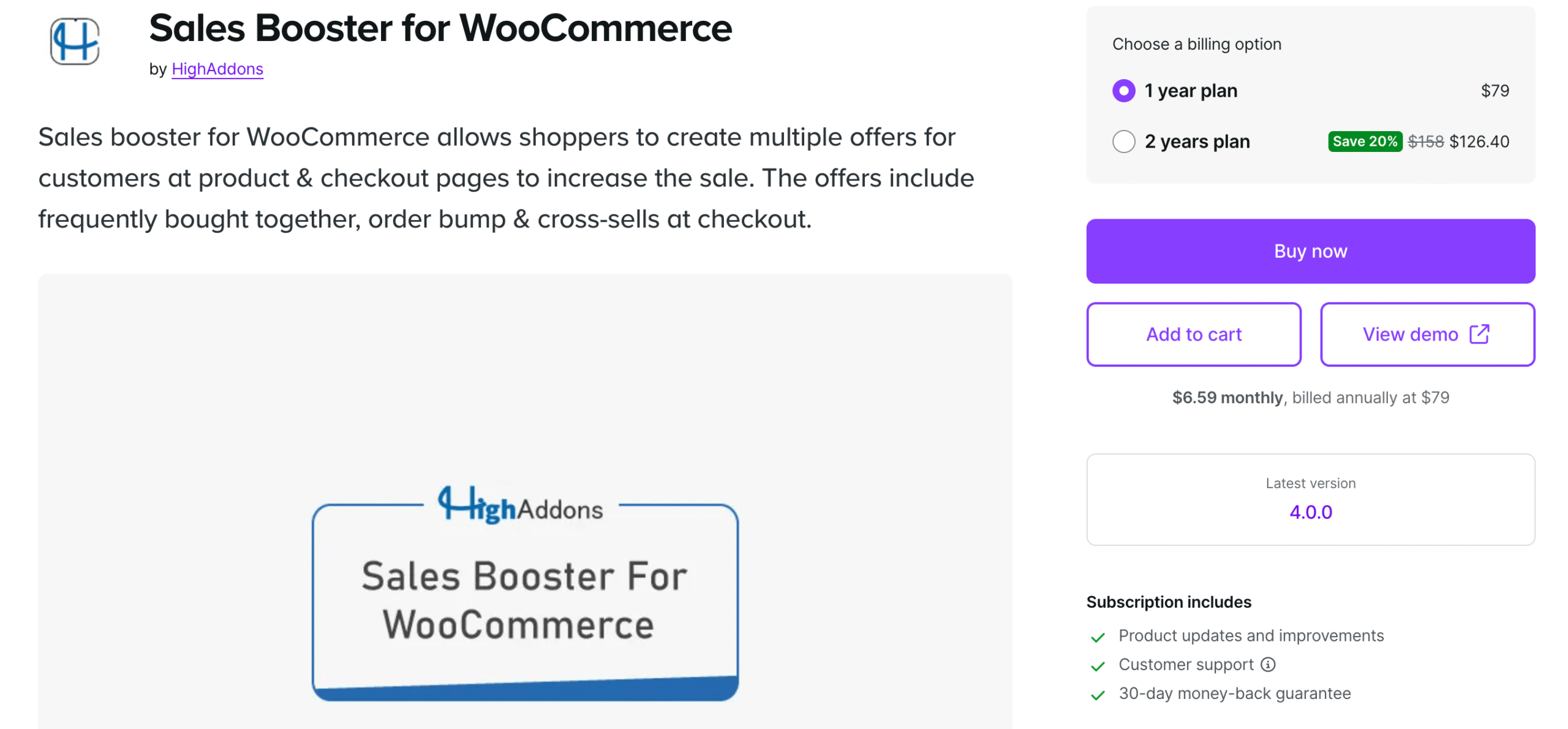
Best for: Non-technical store owners who want a simple, intuitive way to add effective upsells and cross-sells directly on the product page.
Iconic Sales Booster is designed with simplicity and clarity at its core. It focuses on empowering store owners to implement proven tactics with just a few clicks.
- Core Features: “After add to cart” cross-sell popups, “frequently bought together” tables, and post-purchase one-click upsells.
- Pros: Extremely easy to use, clean and unobtrusive offers, and focuses on battle-tested strategies that work.
- Cons: Lacks advanced targeting and customization, with a primary focus on the product and thank you pages.
- Pricing: Premium-only, with plans starting at $129/year.
5. CartFlows (The Landing Page & Funnel Powerhouse)
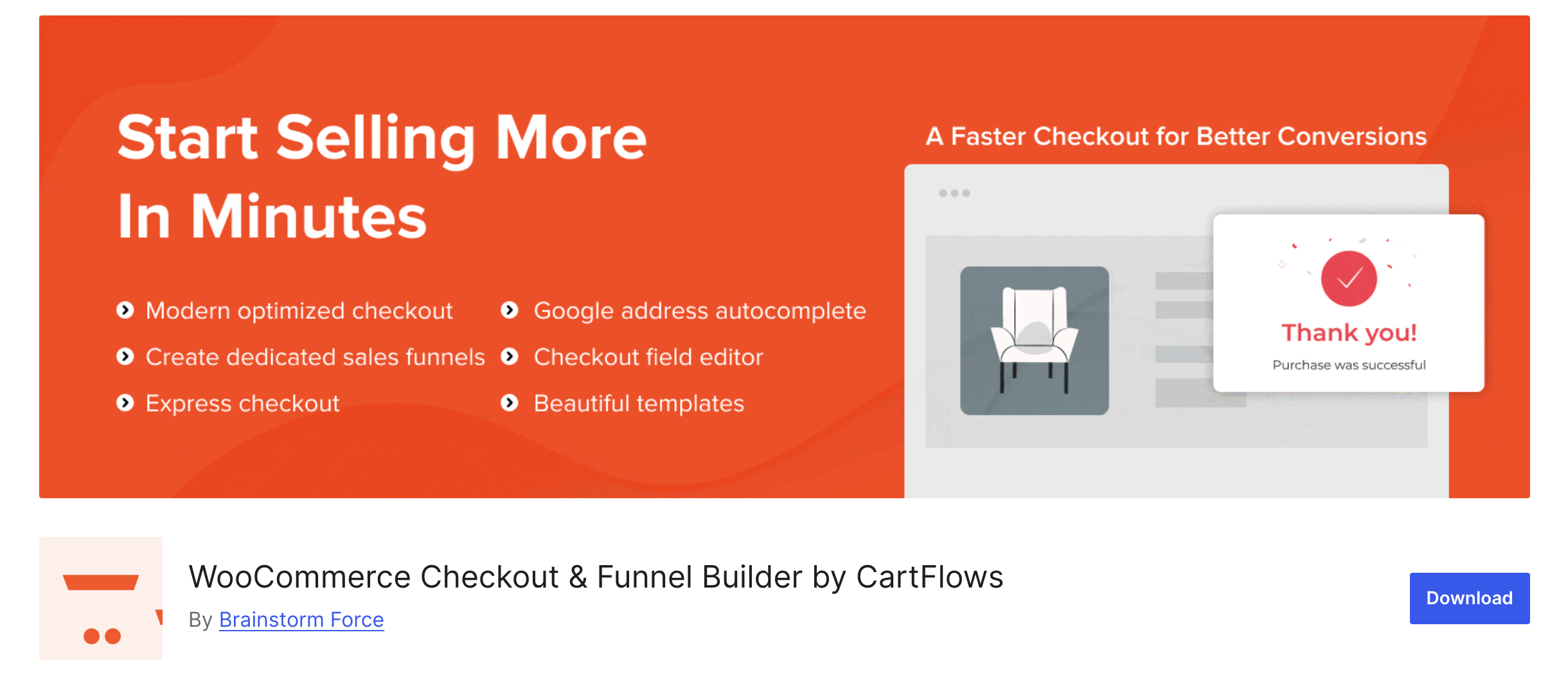
Best for: Agencies and marketers who want to build complete sales funnels, starting from custom landing pages.
CartFlows operates on a grander scale, allowing you to replace the entire rigid WooCommerce checkout process with a series of streamlined, high-converting pages.
- Core Features: A library of pre-built funnel templates, checkout page optimization, one-click order bumps, and post-purchase upsells.
- Pros: Full funnel control from landing page to thank you page, beautiful templates, and A/B testing capabilities.
- Cons: Can be overly complex for simple upsell needs and requires a greater awareness of performance optimization.
- Pricing: Free version available. Pro version starts at $129/year.
6. YITH WooCommerce Frequently Bought Together (The ‘Amazon-Style’ Bundle King)
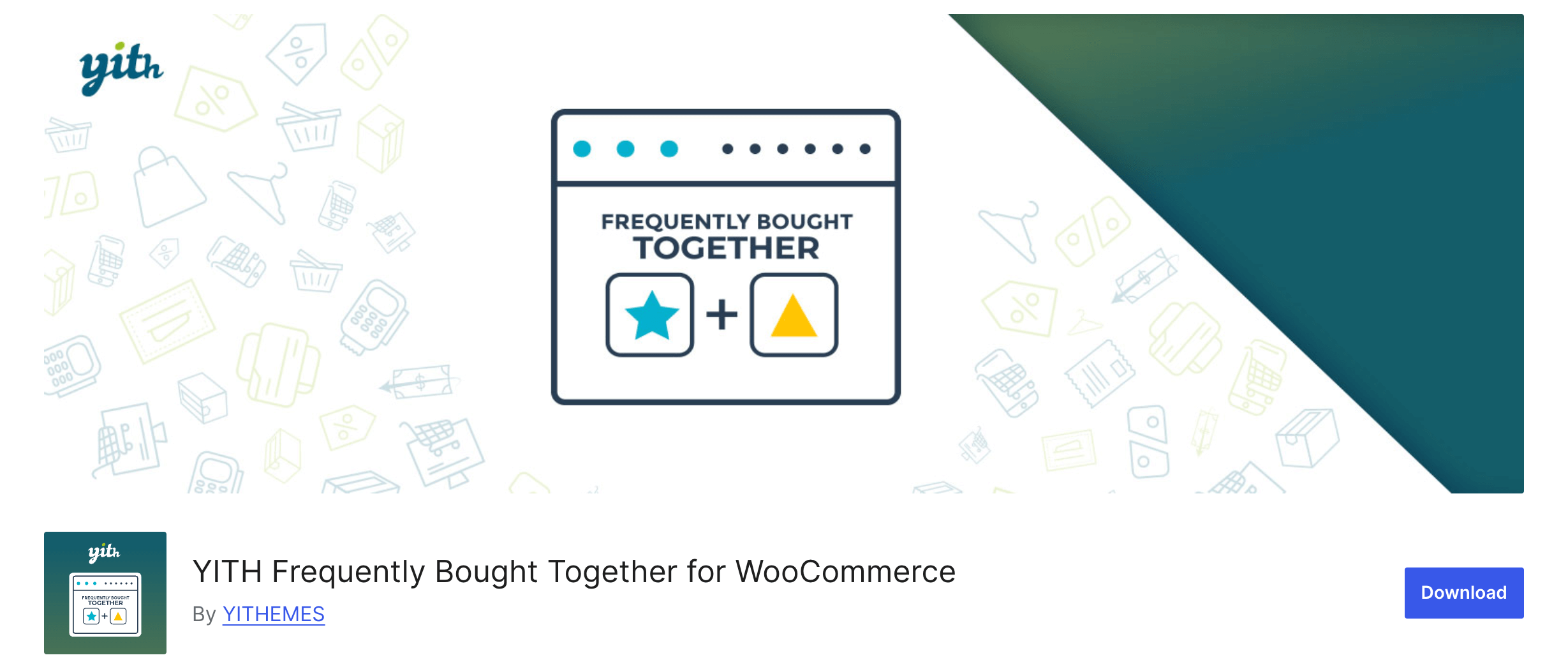
Best for: Stores with highly complementary products that want to perfect the “Amazon-style” bundling experience on their product pages.
YITH WooCommerce Frequently Bought Together has a singular focus: to replicate the incredibly effective bundling tactic popularized by Amazon, allowing customers to add a group of related items to the cart in one go.
- Core Features: Simple bundle creation, percentage or fixed discounts for bundles, and a customizable layout.
- Pros: Laser-focused and effective at its specific job, excellent for visual merchandising, and increases the perceived value of a purchase.
- Cons: Extremely niche (no checkout bumps or post-purchase offers) and its functionality is often included in all-in-one suites.
- Pricing: Free version available. The premium version is priced at around $69/year.

How to Choose the Right Upsell Plugin For YOUR Store
The “best” plugin is the one that fits your role, resources, and goals.
For the Data-Driven Marketer
Your primary need is control and measurability. FunnelKit and CartFlows are built for you, with advanced A/B testing and conditional logic. If your main frustration is tool fragmentation, consider StoreGrowth for its powerful features and unified analytics dashboard.
For the Busy Store Owner
You need a solution that is easy, affordable, and effective without slowing down your site. StoreGrowth is the clear winner, solving the plugin complexity and site speed concerns. It provides the best all-in-one value. For very simple needs, Iconic Sales Booster is a user-friendly alternative.
For the Agency/Developer
Your reputation depends on delivering sites that are fast, effective, and easy for clients to manage. StoreGrowth is a top choice for its lightweight architecture and all-in-one nature, which simplifies client builds. For high-end clients requiring bespoke funnels, FunnelKit and CartFlows are the go-to powerhouses.
Ready to see these strategies in action? Try the free version of StoreGrowth and launch your first order bump in minutes.
Frequently Asked Questions (FAQ)
What’s the difference between an upsell, cross-sell, and order bump?
An upsell is a more expensive version of the same product. A cross-sell is a related, complementary product. An order bump is a specific type of low-cost cross-sell offered directly on the checkout page.
Do WooCommerce upsell plugins slow down my site?
They can, especially when you stack multiple single-feature plugins. This “plugin bloat” adds code and database queries that hurt performance. This is why a lightweight, all-in-one suite like StoreGrowth is crucial for protecting your site’s speed.
Where is the best place to put an upsell offer in WooCommerce?
It depends on the offer. Use the product page for bundles, the checkout page for small order bumps, and the thank you page for higher-value, risk-free post-purchase one-click upsells.
Can you offer a true one-click upsell after checkout?
Yes. This powerful strategy requires a payment gateway that supports tokenization (like Stripe) and a plugin that can execute the function (like StoreGrowth, FunnelKit, or CartFlows). It allows a customer to accept an offer post-purchase with a single click.

Conclusion: Stop Leaving Money on the Table
The path to a higher Average Order Value isn’t about more traffic or more plugins. Sustainable growth comes from maximizing the value of every single customer you worked so hard to acquire. It’s about strategically implementing the right offer, at the right moment, without ever compromising the speed and performance that protect your core conversion rate.
The modern eCommerce landscape demands a move away from the slow, fragmented approach of the past. The future is unified, fast, and data-driven. An all-in-one suite like StoreGrowth provides the powerful features you need in a single, lightweight package. You get the AOV-boosting power without the performance headaches.
Stop letting plugin bloat kill your conversions. Start making every sale more profitable.
Ready to see the difference a unified toolkit can make?
Download the free version of StoreGrowth today and launch your first AOV-boosting campaign in minutes.
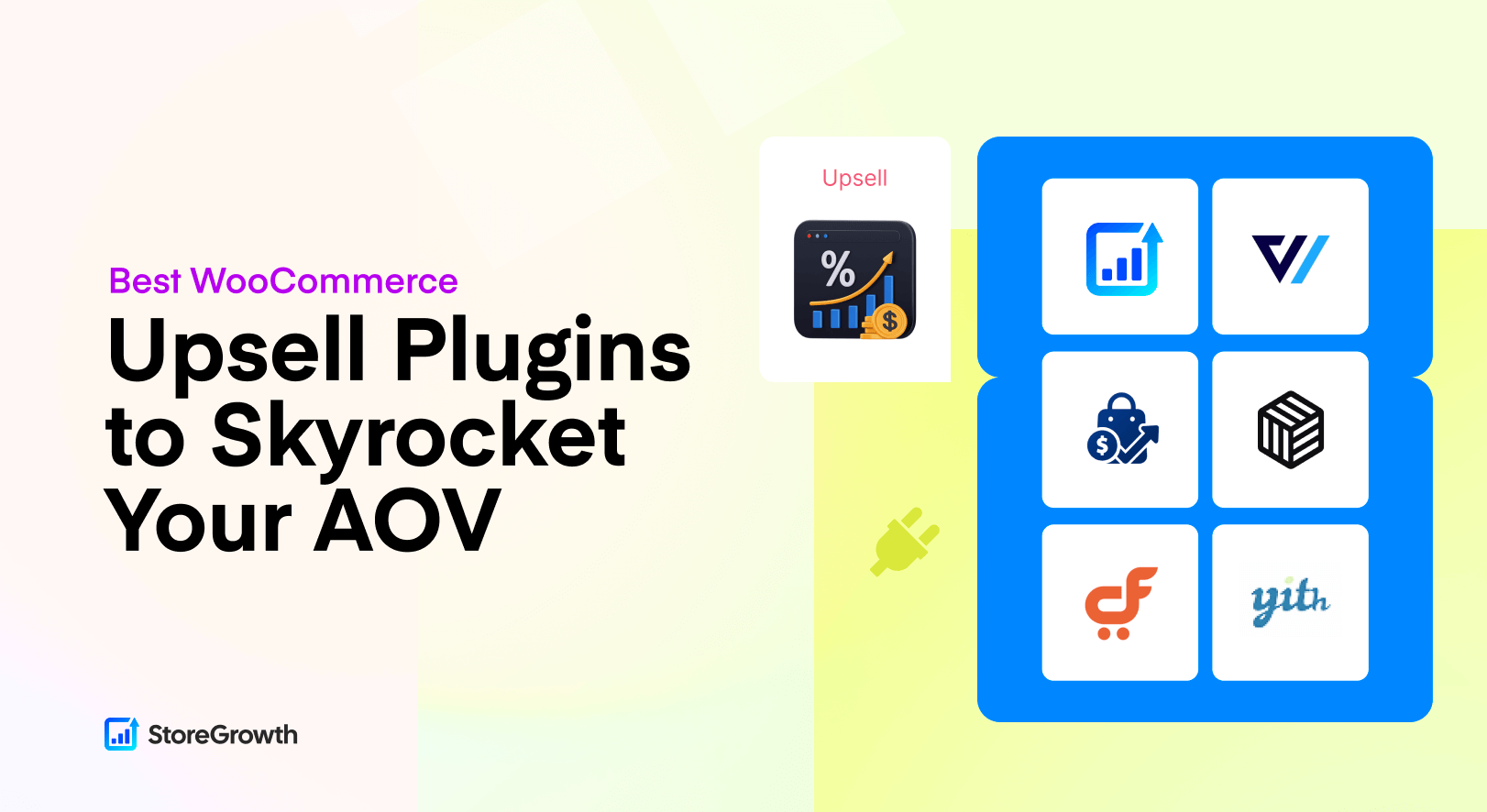
Leave a Reply
You must be logged in to post a comment.